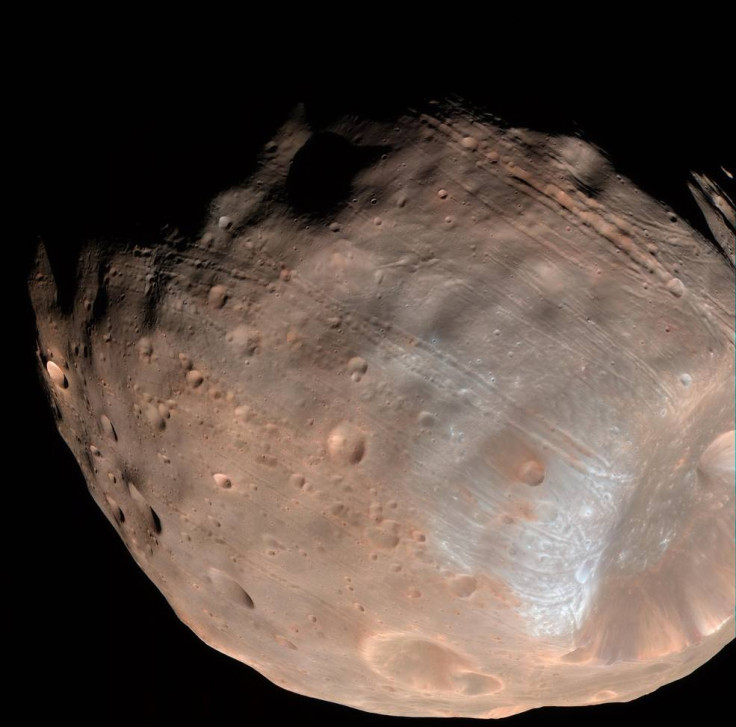Destruction of Mars moon Phobos will create ring around Red Planet lasting 100 million years

The destruction of Mars's larger moon Phobos will mean the Red Planet will get its own ring that could last for 100 million years, scientists have said. Phobos is predicted to disintegrate between 20 and 40 million years from now, as the gravitational pull from Mars draws it inwards and tears it apart.
Researchers from the University of California, Berkeley, used observational data and models to find Phobos is mostly composed of weak materials. This means the moon will probably break apart as a result of tidal stresses caused by Mars's gravitational pull.
After this happens, the particles left over from Phobos will disperse and form a ring around Mars: "All of the gas giants in our Solar System host ring systems, in contrast to the inner planets," study authors Benjamin Black and Tushar Mittal wrote in the journal Nature Geoscience. "One proposed mechanism of planetary ring formation is disruption or mass shedding of moons."
They said there are two possible outcomes from Phobos demise – either it crashes into Mars forming a big crater, or it breaks apart to form this ring: "Our analysis suggests that much of Phobos is composed of weak, heavily damaged materials. We suggest that - with continued inward migration of the moon - the weakest material will disperse tidally in 20 to 40 million years to form a Martian ring.
"We predict that this ring will persist for 106 to 108 million years and will initially have a comparable mass density to that of Saturn's rings. Any large fragment of Phobos that is strong enough to escape tidal breakup will eventually collide with Mars in an oblique, low-velocity impact."
The researchers say the fate of Phobos could offer an insight into other moons that migrate inwards (our own moon is slowly migrating outwards) that were destroyed early in our solar system's history. They also noted a future proposed mission to Phobos would allow them to test the interior structure of the moon to get more conclusive evidence.
"We speculate that diminutive Phobos may be the last of many inwardly migrating prograde satellites in our solar system," they said. "Numerical simulations of planet formation suggest that Earth-like planets typically experience multiple giant impacts, which may lead to circumplanetary disk formation and a stochastic distribution of planetary spins (including a contingent of slowly spinning primaries). Thus, inwardly migrating satellites—some of which may break up tidally, some of which may collide with their primaries—are likely to be an underappreciated and important component of planetary evolution."
© Copyright IBTimes 2025. All rights reserved.






















